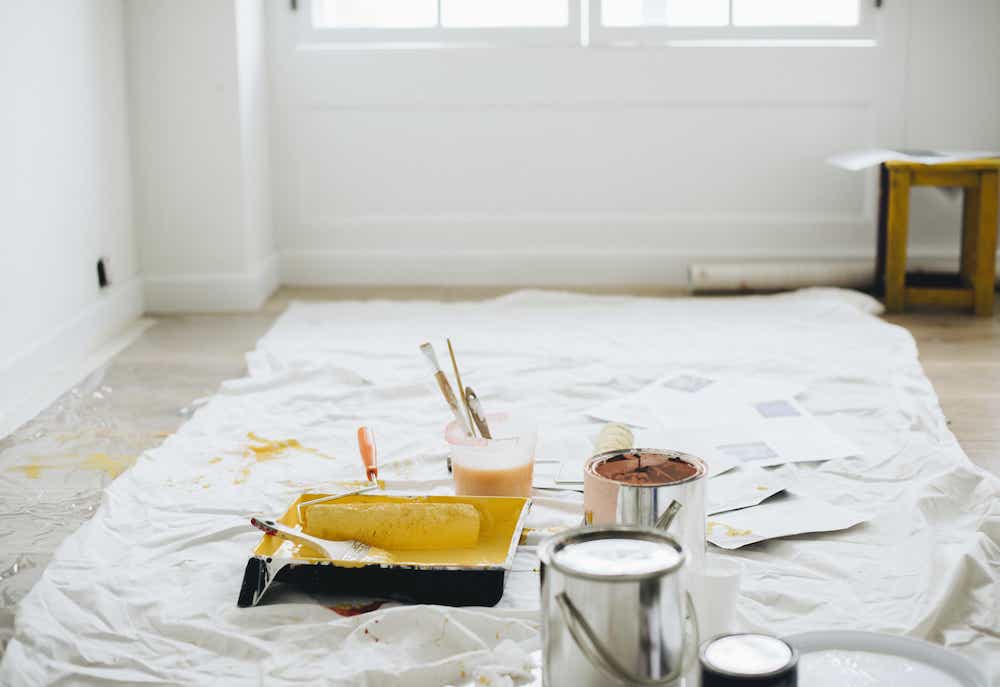How to tell if your tin of paint has gone off
When it comes to repainting areas of your home, many homeowners keep old paint cans for future touch-ups or projects. However, there's nothing more disappointing than discovering that your leftover paint has turned rotten. In this section, we will guide you on how to identify rotten paint and explore the causes behind it.
Identifying Paint That Shouldn’t be Used
Knowing the signs of going off paint is crucial in determining whether your paint can be safely used or if it needs to be discarded. There are two primary indicators of rotten paint: texture and smell.
-
Texture: Bad paint lacks the smooth consistency you would expect. When you stir up your leftover paint, look out for chunks, lumps, or a grainy texture. These irregularities indicate that the chemical composition of the paint has changed, rendering it unusable.
-
Smell: Old paint can emit an unusual and foul scent. When you reopen the paint can, you'll likely notice the rancid or sour odour immediately. If the paint smells off or is unpleasant, it has likely gone bad.
Causes of Bad Paint
Understanding why paint goes bad can help you prevent it from happening in the first place. Here are the main factors that contribute to paint rot:
-
Improper Storage: One of the leading causes of paint deterioration is poor storage. To maintain the quality of your paint, store it in a cool and dry area with a consistent temperature. For example, a closet in your basement can provide an ideal storage environment. It's important to note that oil-based paint, commonly used for skirtings and frames, is less prone to spoiling due to temperature fluctuations compared to water-based wall paint.
-
Bacterial Contamination: When you directly dip a painting tool into a can of paint, you risk introducing bacteria that can lead to paint rot. To minimize this risk, pour the paint into a separate container, such as a disposable cup for brushing, a paint tray for rolling, or use a paint pad. This precautionary step reduces the likelihood of rot-forming elements entering the liquid.
-
Inadequate Sealing: Properly sealing your paint can is essential to prevent it from going off. An effective hack for maintaining the freshness of stored paint is to cover the can with plastic wrap before securely replacing the lid. Additionally, transferring partially used cans to smaller airtight containers can help prevent spoilage over time. Remember to mark the new container with the paint colour by painting a swatch on the outside before adding it to your collection of cans.
Tips for Using Leftover Paint
While many types of interior paint can last beyond their listed expiration dates when stored correctly, using aged paint requires some additional considerations. Here are some tips for utilising leftover paint:
-
Colour Separation: Over time, the colours in the paint can separate. If the consistency of the paint is still good and there are no signs of rotten paint like chunks or lumps, but you can't adequately stir it by hand to achieve the desired colour, take the paint can back to the store to be shaken can solve the problem.
-
Thickening of Paint: Aged paint can become too thick to spread evenly. If you encounter slight thickening, you might be tempted to thin the paint. For emulsion paint, consider using a bit of water, while oil-based paints may require special thinners. Always follow the safety instructions when using a thinner.
-
Skinning: Exposing paint to air for an extended period or inadequate sealing can lead to a layer of dried paint forming on top of the remaining liquid in the can. This phenomenon is known as "skinning." Accidentally stirring some of this dried paint into the liquid can result in particles that create an uneven surface when the paint dries.
By following these tips and taking proper care, you can avoid issues such as opening a can of bad paint and confidently using your leftover paint for touch-ups around your home.
Remember, proper paint storage, preventing cross-contamination, and recognising the signs of rotten paint are essential for successful painting projects. Don't let poor paint ruin your walls or DIY endeavours. Keep your paint fresh and ready for action!
Disclaimer: This article is for informational purposes only and does not constitute professional advice. Always consult a qualified professional for any painting or home improvement needs.

